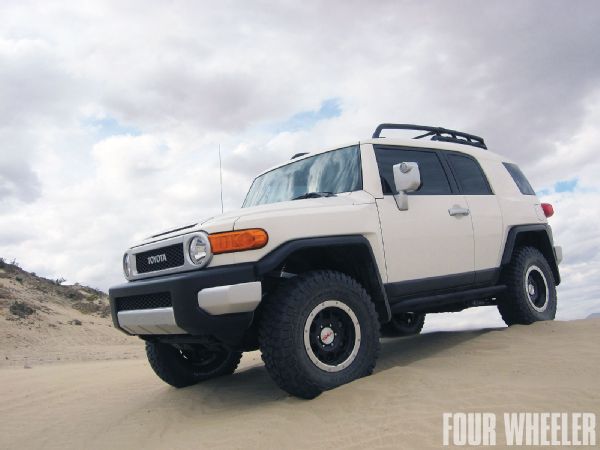
If you are like us, you can exhaust the capabilities of your stock suspension within a matter of weeks. Off-road junkies have a tendency to drive hard, and we often find the limits of our vehicles before we've had the chance to improve their abilities. Over the past five years, the Toyota FJ Cruiser has become a force in the four-wheel community, spawning hundreds of clubs and numerous websites, and it has been the inspiration for several new Toyota-based magazines. Out of the box, you can take your FJ Cruiser through just about any terrain-just as you could with its predecessor, the J-40, back in the '60s.

Additional ground clearance and increased high-speed off-road drivability are two common desires among most four-wheelers in the dirt. More clearance allows us larger tires, making traversing trails much easier; a beefed-up suspension gives us the peace of mind needed to blast through the desert, day after day, and still make it home safe and sound. This is where Icon Vehicle Dynamics out of Riverside, California, makes its play. The company's FJC Stage suspension systems range from an entry-level Stage 1 kit all the way up to a race-inspired Stage-5 setup. For this story, we'll install the top-line Stage 5 kit with billet upper control arms and lower links, and remote-reservoir shocks.
How It Works
We can't speak highly enough for how great our FJ Cruiser has been treating us. Our suspension, wheels, and tires went on the truck over six months ago and are still going strong. The Icon suspension has been nothing short of flawless. During one of our many Ocotillo Wells, California, trips, we spent countless hours blasting through the open desert at speeds ranging from 30 to 60 mph with total confidence behind the wheel. The suspension soaked up whoops and rocks, and even landed us safely on the ground after a few "oops" moments. The Payette Draw Trail in Payson, Arizona, was also no match for our Cruiser and its new setup. The increased vehicle height and BFG tires made light work climbing up and over everything in its path. On top of its off-road performance, the FJ still rides as smooth on the road as it did when stock. We can't wait for our big cross-country trip we have planned next year for the truck. A well-built four-wheel drive vehicle reminds us why we love our chosen sport.




















